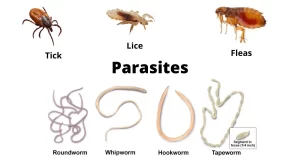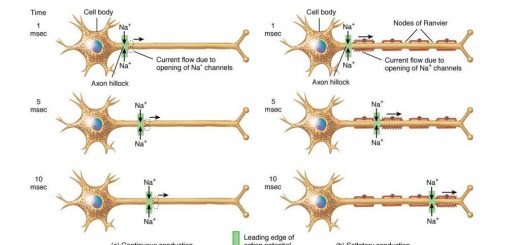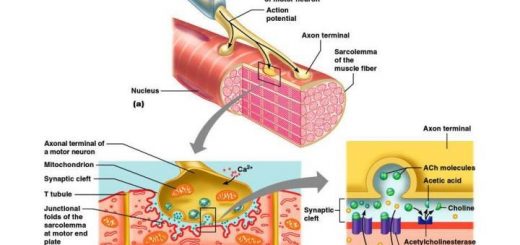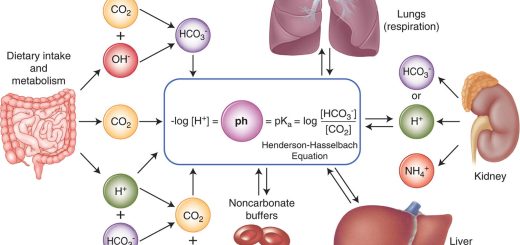Medical parasitology, Sources of Parasitic Infection, Types of Parasites and Hosts
Parasitology is the area of biology concerned with the phenomenon of dependence of one living organism on another, A parasite is defined as an organism that lives on, or within another organism called the host at whose expense the parasite obtains food and protection, Usually, the parasite causes injury to its host.
Medical parasitology
Medical Parasitology is the subject that deals with the parasites that infect man, the diseases they produce, the clinical pictures, and the host responses against them. It is also concerned with the various methods of their diagnosis, their treatment, and finally their prevention and control.
Types of Parasites
- Obligatory parasites are those which cannot exist without a host.
- Facultative parasites are those which can exist independently of their host, leading a free-living life in soil or water.
- Accidental or Incidental parasites are those which enter accidentally and can live in a host different from their original one.
- Opportunistic parasites are those of low pathogenicity and become highly pathogenic in patients with a defective immune system. Parasites can also be divided according to their habitat into endoparasites which live inside their host causing infection and ectoparasites which are found attached to the skin of their host or its superficial tissue, causing the infestation.
Types of Hosts
- Definitive host: it is the host in which the adult stage of the parasite lives, or in which sexual reproduction takes place.
- Intermediate host: It is the host in which the immature or larval stages of the parasite are found, or in which the parasite multiplies asexually.
- Reservoir host: When a parasite utilizes a wide range of animals as definitive hosts beside man, such animals represent the reservoir host. In the absence of man, the parasite can continue its life cycle in these animals.
- Paratenic or Transport host: It is the host in which the larval stage of the parasite exists without undergoing any further development but remains alive and can be infective to another host.
- Vector: The term vector is applied usually to arthropods that transmit parasites from one host to another.
Host-Parasite Relationships
The close association between two different organisms is known as symbiosis. This association is in the form of commensalism or parasitism, In commensalism, the organism derives benefit from its host without causing injury to it. However, parasites obtain food and protection from their hosts and are harmful to them, this relation is known as parasitism (the parasite derives benefit from its host and causes injury to it).
Superinfection is reinfection with the same species of parasite. Autoinfection is the case when an infected person is his own source of re-infection. The infective stage of the parasite is the stage that is responsible for the infection, Diagnostic stage of the parasite is the parasitic stage that is present in the host’s excreta and body fluids, such as stool, urine, blood, or sputum, and is used as means of diagnosis of the parasitic infection.
Sources of Parasitic Infection or Infestation
Parasites can be acquired from one of the following sources which harbor the infective stage:
- Soil: Soil may be contaminated with human excreta containing eggs, larvae, cysts, or oocysts of the parasite.
- Water: Contaminated water may carry protozoal cysts and cercariae of schistosomes.
- Food: Fish, meat, or raw vegetables may contain the infective stages of helminths and protozoa.
- Animals: Domestic animals, such as dogs and cats, can be a source of parasitic infection to man, Zoonosis is the term given to the diseases of animals that are transmissible to man.
- Infected persons: These can be direct sources of infection to others.
- Arthropods: Blood-sucking arthropods can transmit blood and tissue parasites.
- Iatrogenic: Parasites may be transmitted from one person to the other through contaminated syringes amongst drug addicts, or as in transfusion malaria.
- Nosocomial: Where the parasitic infection is acquired by patients during their stay in the hospital and was not present at the time of admission. They are diagnosed during or after hospitalization.
- Placenta: Congenital infection from the mother to the fetus through the placenta occurs in some parasites.
- Milk: Transmammary transmission through the mother’s milk to the child can occur.
Portal of Entry of the Parasites into the Body
The infective stage of the parasite enters the human body through different routes:
- Mouth: It is the most important portal of entry for cysts or oocysts of intestinal protozoa, and eggs of helminths.
- Skin: Active skin penetration occurs from the soil or water by the infective stage which is the motile larval stage Parasites may also be introduced into the skin by blood-sucking arthropods.
- Respiratory tract: Airborne infection can occur.
- Placenta: Transplacental infection can occur.
- Genital tract: Infection can occur through sexual intercourse.
Portal of Exit of the Parasites from the Body
For the continuation of the life cycle, the diagnostic stage of the parasite must have a portal of exit from its host and this can occur via faeces as eggs or larval stages of most helminths and cysts or oocysts of intestinal protozoa. Urine, sputum, blood or genital tract can be also other portals of exit.
Habitat
This is the site where the parasite lives and may multiply in its host e.g. small intestine, large intestine, blood, reticuloendothelial system, or lymphatics.
Life Cycle
The life cycle of a parasite is the cycle of its development from the definitive host back to the same or another definitive host. When a parasite requires only one specific species of the host in which it completes its life cycle then, it is said to have a direct life cycle. When two or more species of hosts are required, the life cycle is referred to as an indirect life cycle, and this requires the presence of one or two intermediate hosts.
Pathogenesis of Parasitic Infections
The ways in which damage may be produced in parasitic infections can occur through different mechanisms which include the following:
1. Mechanical
Obstructive effect: The parasite may obstruct a normal passage causing intestinal obstruction or bile duct obstruction or appendicitis.
Traumatic effect: External damage occurs when the parasite invades the skin as in myiasis. Internal damage can also occur when parasites attach themselves by their buccal myiasis, Internal damage can also occur when parasites attach themselves by their buccal capsules to the intestinal mucosa producing ulcers.
2. Toxic
Circulation of certain toxic by-products of parasites produces generalized manifestations.
3. Necrosis
Enzymes elaborated by the parasite can produce necrosis of tissues
4. Stimulation of the host immune response
Parasitic antigens stimulate both a humoral and cellular immune response provoking different tissue reactions. Allergic reactions can occur, as with insect bites.
5. Cellular destruction
Destruction of red blood corpuscles, reticuloendothelial cells, and other tissue cells can occur.
6. Neoplastic transformation
Parasitic infections may contribute to tumor formation.
Classification of Parasitic Organisms
Parasites that are of medical importance in relation to humans are divided into three major categories or groups: Helminths or worms, Protozoa; unicellular micro-organisms, and Arthropods.
You can follow science online on YouTube from this link: Science online
You can download Science online application on Google Play from this link: Science Online Apps on Google Play
Importance & types of fungi, Opportunistic infections & Predisposing factors to candidosis
Life cycle of varicella zoster virus, Cytomegalovirus & Diagnosis of Infectious mononucleosis
Vaccines types, Live vaccines, Inactivated vaccines, Subunit vaccines, Naked DNA & mRNA vaccines
Adaptive (Acquired immunity) types, Difference between Innate and Adaptive Immune responses
Features and classification of viruses, Defective viruses and Viral vectors used for gene therapy
Cytokines function, use, definition, inflammation & side effects




